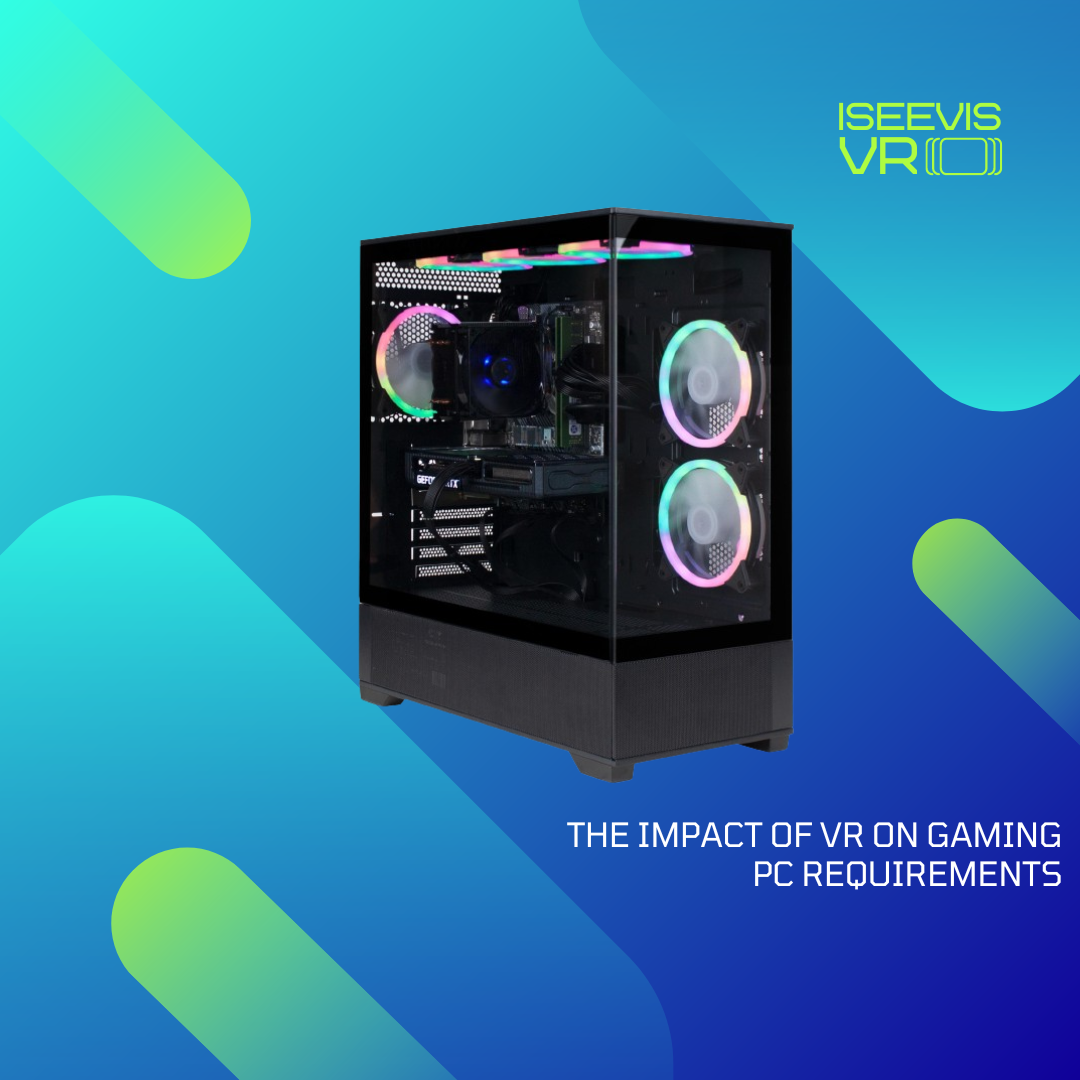Exploring the Metaverse: How Virtual Reality is Shaping the Future of Gaming PCs
Posted by Doctor Memory on 15th Apr 2024
Introduction: The metaverse represents a collective virtual shared space created by the convergence of virtually enhanced physical and digital reality. It’s a realm where users interact with a computer-generated environment and other users. Its significance lies in its potential to revolutionise how we socialise, work, and play, offering immersive experiences that were once the stuff of science fiction.
A Brief Overview of the Metaverse and Its Significance: The metaverse is poised to become the next significant milestone in the evolution of the internet. It promises a future where our digital lives are as integral as our physical ones, with opportunities to engage in everything from virtual concerts and conferences to fully realised digital economies.
The Evolution of Virtual Reality (VR) in Gaming: Virtual reality has transformed gaming from a passive, screen-bound experience to an active, immersive one. The evolution began with simple VR headsets and has now progressed to sophisticated systems that track your movements and let you interact with the game world as if you were truly part of it.
The Impact of VR on Gaming PC Requirements: The rise of VR gaming has dramatically shifted the landscape of gaming PC requirements. To render high-fidelity, immersive worlds without latency, gaming PCs now need more powerful graphics cards, faster processors, and larger amounts of RAM, pushing the boundaries of traditional gaming systems.

The Metaverse Defined
Explanation of the Metaverse Concept: The metaverse is an expansive network of persistent, real-time rendered 3D worlds and simulations that support the continuity of identity, objects, history, and payments. It’s a digital universe that parallels our own, where people can interact, play, work, and create in ways that go beyond what’s possible in the physical world.
Current State of the Metaverse in Gaming: In gaming, the metaverse is currently a burgeoning frontier. Games like ‘Fortnite’ and ‘Roblox’ have begun to scratch the surface, offering players vast worlds where they can not only play but also attend concerts and socialise in virtual spaces. These platforms are rapidly evolving, blending gaming with social media and digital marketplaces.
Potential Future Developments: The potential future developments of the metaverse in gaming are boundless. We’re looking at a horizon where games could become indistinguishable from reality, powered by advancements in VR, AR, and AI. This could lead to fully immersive digital lives, where players can live out entire careers, build homes, and form communities within the metaverse.
Section 2: Virtual Reality’s Rise in Gaming
History of VR in Gaming: The journey of VR in gaming began in the late 20th century, with early devices offering a glimpse into the potential of immersive gaming. Despite initial technology limitations, these pioneering efforts laid the groundwork for today’s advanced VR systems, which deliver interactive experiences that were once figments of the imagination.
Breakthrough VR Games and Experiences: Breakthroughs in VR gaming have been marked by titles like ‘Half-Life: Alyx’ and ‘Beat Saber’, which have pushed the boundaries of what’s possible within virtual worlds. These games not only showcased the technical capabilities of VR but also their ability to craft compelling narratives and engage enhanced gameplay by the player’s presence within the game.
The Role of VR in Social Connectivity Within Games: VR has redefined social connectivity in gaming, enabling players to interact and communicate in shared virtual spaces as if they were physically together. It has been instrumental in games like ‘VR Chat’, where the social experience is just as important as the gameplay itself, fostering a sense of community and belonging that transcends physical boundaries.
Section 3: Gaming PCs in the Age of VR
Necessary Hardware Upgrades for VR: To step into the universe of virtual reality, a gaming PC must undergo significant hardware upgrades. VR demands quick, responsive processing to handle complex environments and rapid movements without lag. It means upgrading to a system with a robust GPU and CPU to meet the minimum requirements for VR gaming.
The Importance of High-Performance GPUs and CPUs :A high-performance GPU is crucial for rendering the detailed graphics of VR at high frame rates, while a capable CPU ensures that the game’s physics and interactions run smoothly. For budget-friendly gamers, an Intel Core i5 or AMD Ryzen 5 series processor paired with a mid-range GPU can deliver a satisfactory VR experience. However, for those seeking the pinnacle of VR gaming, an Intel Core i7 or i9 or an AMD Ryzen 7 or AMD 9, coupled with the latest GPUs, will provide the power needed for the most demanding VR titles.
RAM:, Storage, and Other Critical Components for VR In addition to the CPU and GPU, sufficient RAM is essential, with 16GB being the recommended minimum for a smooth VR experience. Fast storage solutions, like SSDs, ensure quick load times and asset streaming for maintaining immersion. Other components, such as high-quality power supplies and VR-ready motherboards, round out the build, ensuring stability and compatibility with VR hardware. Whether it’s a low-range gaming PC for casual play or a high-end PC for the ultimate VR experience, each component plays a critical role in transporting gamers into the metaverse.

Section 4: Building a VR-Ready Gaming PC
Step-by-Step Guide on Building a VR-Ready Rig: Building a VR-ready PC is an exciting project that requires a selection of components for an optimal VR experience. Start by choosing a compatible motherboard and processor, like an Intel i5 or i7 or an AMD Ryzen 5 or 7. Next, select a high-performance GPU, such as an NVIDIA GTX 1060 or higher, or an AMD Radeon RX 580 or equivalent. Install at least 16GB of RAM and consider an SSD for faster load times. Assemble the components in a case with good airflow, and ensure you have a sufficient power supply.
Cost-Effective Strategies for Upgrading: your PC for VR without breaking the bank, focus on components that offer the best performance-to-cost ratio. You can often find deals on slightly older but capable GPUs and CPUs. Consider buying refurbished or second-hand parts from reputable sources. Upgrading your RAM can also provide a significant performance boost for a relatively low cost. Additionally, look for bundle deals on components, and don’t overlook the potential of overclocking to squeeze out extra performance.
Recommended Specifications for Different Levels of VR Gaming: For a VR gaming experience, aim for at least an Intel Core i5 or AMD Ryzen 5 CPU, an NVIDIA GTX 1060 or AMD Radeon RX 580 GPU, and 8GB of RAM. Mid-range VR gaming PCs should have an Intel Core i7 or AMD Ryzen 7, an NVIDIA RTX 2060 or AMD Radeon RX 5600 XT, and 16GB of RAM. High-end VR setups will benefit from the latest i7 or i9 processors, RTX 2080 or higher GPUs, and 32GB of RAM or more for the most demanding VR games and applications
Section 5: The Future of VR and Gaming PCs
Upcoming VR Technologies and Their Expected Impact: The future of VR is brimming with potential, with advancements like wireless headsets, high-definition images, and powerful processors on the horizon. The integration of artificial intelligence into VR experiences will enhance interactivity and realism, making virtual environments more responsive and lifelike. The advent of 5G technology is also expected to provide real-time and seamless experiences, further expanding the capabilities of VR in gaming.
Predictions for Future Gaming PC Builds: As we look ahead to 2024, the landscape of gaming PCs is set to evolve with the growing demands of VR. We can anticipate better options for budget-conscious gamers, including price drops for hardware components like DDR3, DDR4, DDR5 RAM and SSDs. While major GPU companies may not release new models, the market will likely see improved laptops for gaming and a new generation of OLED monitors catering to the needs of diverse gamers.
The Role of Cloud Gaming and VR: Cloud gaming, combined with VR, is poised to revolutionise the gaming industry by unlocking new dimensions of immersive experiences. This fusion allows players to enjoy high-quality VR games on various devices without the need for expensive hardware, as the heavy lifting is done on remote servers. VR gaming is more affordable and accessible, potentially leading to a higher subscription count for live services like Game Pass and GeForce NOW.
Conclusion
Virtual reality has undeniably reshaped the gaming landscape, pushing the capabilities of gaming PCs to new heights. The immersive nature of VR gaming has necessitated more powerful hardware, driving innovation and advancements in PC technology. As we stand on the cusp of the metaverse era, the fusion of VR and gaming is set to deepen, offering experiences that are more engaging and lifelike.
Final Thoughts on Preparing for the Future of Gaming in the Metaverse: The metaverse beckons with a promise of boundless exploration and interaction. To prepare for this future, gamers and developers alike must embrace the evolving technology, ensuring that their systems are ready to handle the complexities of VR. It’s an exciting time to be part of the gaming community as we collectively step into a world where the digital and physical increasingly intertwine.
Now is the time to dive into VR gaming if you haven’t already. Whether building a new VR-ready PC or upgrading your current setup, the investment is worth the unparalleled experience. Join the revolution, engage with the community, and share your adventures in the metaverse. The future of gaming awaits, and it’s more thrilling than ever.





